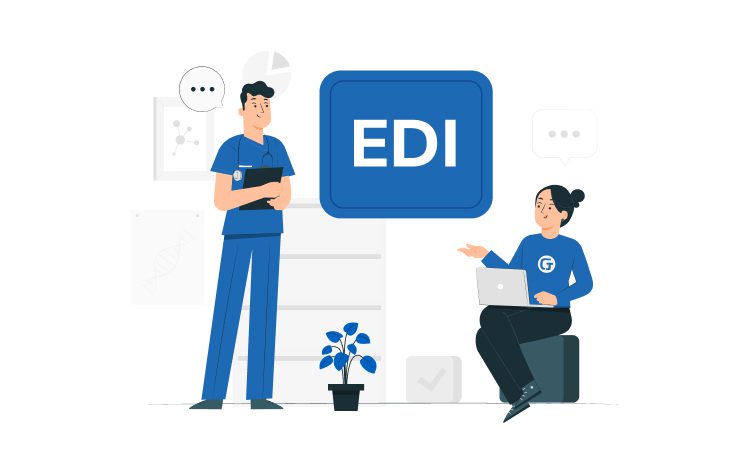
Software Development Roadmap: Tips for Your Digital Product Plan



GrowInstitute indicates ineffective management as one of the most common mistakes that lead to the death of startups. We totally agree with that because the lack of strategic planning before launch is fraught with constant adjustments or stagnation.
As in any enterprise, a plan is necessary to release a technological product. It includes the application’s life stages, its development, and scaling. It is the basis for development and post-release service.
GloriumTech experts analyzed the mistakes of entrepreneurs who prepare a software development roadmap. From this article, you will learn how to correctly formulate a development strategy and what to focus on when planning.

Content
A roadmap is a visual display of all stages of an IT solution development: from an idea to post-release scaling. One of the main reasons for startup failures is the attempt to expand the MVP functionality before entering the market. Haste is evidence that the manager misplanned the roadmap or did not develop it at all.
Project management is a responsible and important task for any entrepreneur. The viability of an IT solution both in the early stages of development and after the release of the pilot version depends on planning and analytics. It does not matter whether it is an application, a web resource, or mobile software because the final quality affects the loyalty of users and investors.
The latter is critical for startups where all funding comes from outside. What exactly is the role of a software development roadmap for each participant of a new business? Let’s take a closer look.
A startup creator needs a roadmap to navigate the production stages. For example, if all critical features are included in the plan, but it turns out that it is necessary to change one of them during development, it is performed painlessly and quickly by correcting the map.
Also, when changes are made to the roadmap, they are automatically displayed for all participants, which improves communication and speeds up development.
Investors love accurate numbers and accept them better than abstract ideas. That’s why they require the founder of the startup to display plans on paper (or in digital form). These include: a description of each stage, implementation time, and the scope of the introduced features. Investors evaluate the benefits from the economic side. With a detailed schedule, they can plan expenses and revenues.
When a product is being designed and adjusted to the market and audience, it is vital to interest the end consumer. You may have seen examples of great startup marketing and noticed that almost all successful projects started with publishing a roadmap.
For users, detailing is not so important as accurate deadlines for implementing critical functionality. For example, if a multi-platform tool is planned, then users of each mobile OS are interested in the release date for their devices.
Tell them about this, and you’ll get customer loyalty even before the start of development.
Developers understand the importance of the roadmap most of all. Everything depends on its detailing and flexibility: deadline, quality of the IT product, and even staff involvement. It doesn’t matter for outsourcing performers, you might think, but you’re wrong.
When the development team sees the goals of the project and their role (about 70% of implementation), they perceive responsibility as an incentive, so they work harder. Pure psychology.
The roadmap answers the developers on all the basic questions: what, how, and when. It is vital even in the Agile methodology because it helps to monitor all changes in the project and react to them timely.
To summarize: a software development roadmap is a critical element of IT product development. Its absence leads to inconsistency, unnecessary costs, and even stagnation of the project. To coordinate the actions of each startup participant, it is necessary to implement the plan before starting work and simultaneously adjust it when changes are made.
Investors, users, and developers expect a unique version of the roadmap from the entrepreneur. Despite the high costs, such variability increases loyalty very much.
We said that most owners of failed startups made mistakes when planning development. Let’s take a closer look at them and then focus on preparing for developing the roadmap. So, when we say “mistakes”, we mean fundamentally wrong actions, laziness, irresponsibility, or external factors. Let’s study the most common in more detail.
Roadmap problems for startups:
To summarize: if the roadmap is missing or incorrect, problems may occur. Some of them can be solved by adjusting the plan, but the rest destroy the project. You need time and understanding of an IT product to build a development strategy.
As you see from the previous paragraph, the main problem of all startups and IT solutions is the incorrect software development roadmap or its absence. GloriumTech experts have been working in this field for over 10 years and understand the importance of a development plan.
Together with the company’s managers, we have released a guide describing the step-by-step procedure of creating a roadmap for complex IT products. With it, you can plan your work and think strategically: analyze all the steps from describing an idea to transforming a project into a large platform. So, here are 6 steps to the goal.
An idea is only half of a successful startup. Before starting development, define goals for your app and what tasks it will solve. For example, if your business is focused on providing services, the purpose of your software is to ensure high-quality interaction, a friendly interface, and pleasant graphics. The tasks will depend on the type of service: payment, search, communication, etc.
Competition in the market is growing every day, making it difficult for young companies to enter the niche. Therefore, it is necessary to set the minimum possible deadlines with the maximum quality of the final product. Haste is also harmful when it negatively affects your IT solution. Calculate timelines based on team skills, relevance, competition, and your target audience.
A roadmap is a visualization of the path from the idea to the final IT product. It includes MVP, one of the main stages of preparation for release and scaling. Plan each feature point to realize critical opportunities before presenting to investors and the public. It will increase the chances of a warm welcome to your app and create the necessary conditions for product expansion in the future.
Distribute responsibilities among performers. There should be no blind spots or ambiguous definitions in the plan. For example, if you need a complex interface with advanced multi-level management, it is best to involve three specialists with relevant skills for implementation. If they are engaged in only one part of the project, they are more likely to develop the required element on time.
Make sure the roadmap for software developers has enough room to maneuver. Leave a small margin of time for edits or adjustments. Distribute checkpoints by stages and select several reporting days when you can get acquainted with the work performed and evaluate the effectiveness. It is necessary to make changes in these intervals so that the performers include them in their schedules.
When implementing a software development roadmap, plan everything in advance and make sure you look ahead to your project. Of course, you will scale after the release of the MVP and its testing in the market. However, your far-reaching plans will clearly demonstrate ambition and confidence in success to investors and consumers, which will increase loyalty to your company.
To summarize: Define product goals, performers’ roles, and responsibilities in the project. Also, include quality assurance and reporting checkpoints in the plan. You will manage the workflow and predict the further development of the app efficiently.
Roadmap to software development is a must-have component of any startup. Even large companies build development and scaling strategies. If you have any difficulties with creating a plan, we will help. GloriumTech provides a full range of services for startup owners and entrepreneurs who need consulting and application development of any complexity. Contact our manager to discuss the project. With GloriumTech, you get full support from PoC to post-MVP scaling.
To control every development stage and prepare reports to investors and consumers.
Yes, but the success rate of development without a roadmap tends to 0%. There are few exceptions, but they are a kind of a statistical error.








